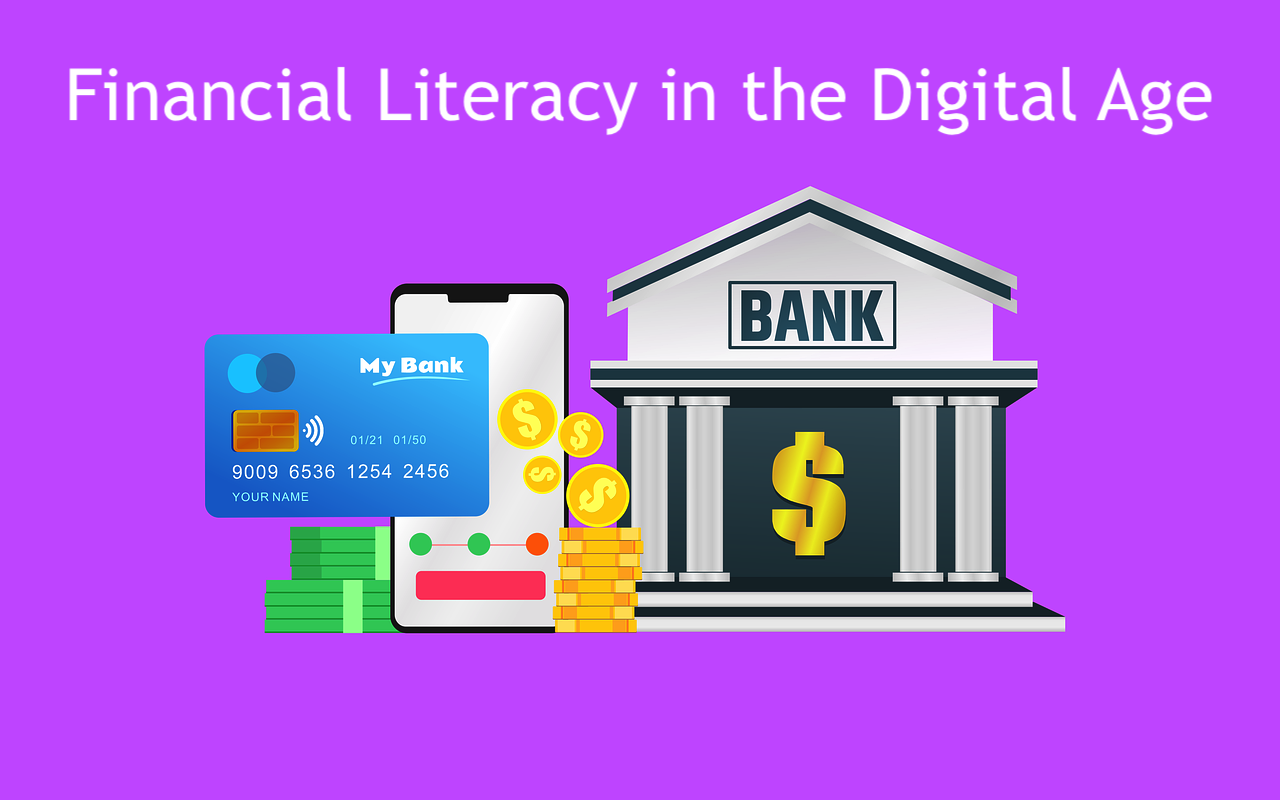
The rise of digital banking, online transactions, and financial apps has made managing money more convenient than ever. However, with these conveniences come risks. Cybersecurity threats targeting personal and financial data are on the rise, and without proper financial literacy, individuals may unknowingly expose themselves to fraud, identity theft, and significant financial losses.
Understanding cybersecurity is now an essential part of financial literacy. It helps individuals protect their assets, recognize online threats, and navigate digital finance with confidence. In this article, we will explore the importance of financial literacy in a digital age, key cybersecurity risks, and practical steps to safeguard your financial well-being.
The Intersection of Finance and Cybersecurity
Financial literacy has traditionally focused on budgeting, investing, and debt management. While these remain crucial, digital financial skills have become equally important. People must now understand:
- How to secure their online banking accounts
- The dangers of phishing scams and data breaches
- How to recognize fraudulent financial transactions
- The role of encryption and multi-factor authentication (MFA)
Without knowledge of cybersecurity practices, even the most financially savvy individuals can fall victim to cyber threats. Protecting personal information is no longer optional—it is a necessity for financial stability.
Common Cybersecurity Threats in Finance
1. Phishing Scams
Phishing remains one of the most common tactics used by cybercriminals. These scams involve emails, text messages, or fake websites that trick users into providing sensitive information such as login credentials, Social Security numbers, or banking details. A fraudulent email might mimic a legitimate financial institution, urging you to verify your account details. Falling for such scams can lead to stolen funds, compromised credit, or even identity theft.
2. Data Breaches
Financial institutions and online platforms store vast amounts of personal data. A data breach occurs when hackers infiltrate these systems and steal sensitive customer information. Even if you use strong passwords and secure your accounts, a breach at a company you do business with can still put your financial details at risk. Monitoring your financial statements and using identity protection services can help mitigate the damage caused by data leaks.
3. Public Wi-Fi Risks
Many people access their bank accounts or make online purchases while using public Wi-Fi. However, unsecured networks pose a significant cybersecurity risk. Hackers can intercept your connection and steal sensitive information. To stay safe, avoid logging into financial accounts while on public Wi-Fi or use a virtual private network (VPN) for added security.
The Role of Multi-Factor Authentication and Strong Passwords
One of the simplest yet most effective ways to enhance your financial cybersecurity is through multi-factor authentication (MFA). This security measure requires users to verify their identity using multiple methods, such as a password combined with a one-time code sent to their phone or email.
Additionally, using strong and unique passwords for each financial account is crucial. Many cyberattacks succeed because people reuse passwords across multiple sites. A password manager can help you generate and store complex passwords, reducing the risk of unauthorized access.
Secure Financial Transactions: The Importance of Awareness
As financial transactions move online, ensuring secure payments is essential. Here are some key practices to follow:
- Verify Website Security: Before entering financial details on a website, check for "https" in the URL and look for a padlock symbol in the browser address bar.
- Use Secure Payment Methods: Credit cards and digital payment platforms offer fraud protection. Avoid using debit cards for online transactions whenever possible.
- Monitor Account Activity: Regularly reviewing bank and credit card statements can help detect suspicious transactions early.
Understanding Financial Cybersecurity in Everyday Transactions
Cybersecurity concerns extend to everyday transactions, even those that seem simple. For example, depositing a check is a common financial task that has evolved with digital banking. Mobile banking apps now allow users to deposit checks remotely, reducing the need for physical visits to the bank.
A common question people ask is, "How do I deposit a check?" The process typically involves:
- Logging into your mobile banking app.
- Selecting the mobile deposit option.
- Taking clear photos of the front and back of the check.
- Confirming deposit details and submitting the check for processing.
While convenient, online check deposits also come with cybersecurity risks. Hackers may attempt to intercept banking credentials through malware or phishing attempts. To stay safe, always use secure internet connections, enable MFA, and avoid storing images of deposited checks on your phone.
Teaching Financial Cybersecurity: Why It Matters
Financial education programs should prioritize cybersecurity. Many people learn about personal finance but remain unaware of online security risks. Schools, workplaces, and financial institutions should emphasize:
- Recognizing scams and fraudulent transactions
- The importance of strong passwords and account security
- How to safely use online banking and financial apps
- The risks of oversharing personal information on social media
By integrating cybersecurity into financial education, individuals can make informed decisions, safeguarding their wealth and personal data from cyber threats.
Conclusion
In today’s digital world, financial literacy is incomplete without a strong understanding of cybersecurity. As cyber threats continue to evolve, individuals must take proactive steps to secure their finances. Protecting financial data, using secure payment methods, and staying informed about digital threats are essential habits.
By combining financial knowledge with cybersecurity awareness, individuals can navigate the digital financial landscape confidently. Whether you’re checking account balances, investing online, or making everyday transactions, prioritizing security ensures financial stability in an increasingly interconnected world.
Share this post
Leave a comment
All comments are moderated. Spammy and bot submitted comments are deleted. Please submit the comments that are helpful to others, and we'll approve your comments. A comment that includes outbound link will only be approved if the content is relevant to the topic, and has some value to our readers.

Comments (0)
No comment